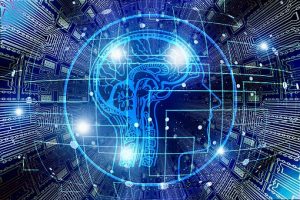The early diagnosis of Diabetic Retinopathy (DR) (see also: https://www.oculistaitaliano.it/articoli/retinopatia-diabetica-e-edema-maculare-diabetico/) reduces the risk of permanent visual impairment by 50% and blindness among people with diabetes.
Artificial intelligence (AI) is the technology researchers are focusing on to increase the speed of diagnosis by using an algorithm to facilitate the processing of retinal images, which can detect key clinical signs of disease.
RD is one of the most feared ocular complications of diabetes and is actually already present in approximately 20% of diabetics at the time of diagnosis, if late, of the diabetic condition and then reaches 60% 20 years after its onset. The visual impairment caused by RD would be preventable if lesions were identified at the onset of the ocular complication, yet data indicate that more than 30% of diabetics have never had an eye examination immediately after the diagnosis of the systemic disease.
The presence of exudates is one of the first clinical signs that would be detectable on ocular fundus images. The identification and careful evaluation of these exudates, however, requires a high degree of professionalism on the part of the specialist, but above all time, the latter being a decisive factor in avoiding irreversible consequences.
Artificial intelligence in DR diagnosis
In recent years, in many sectors, from finance to medicine, we are witnessing an increasingly important application of artificial intelligence, which, in fact, is among the fastest growing technologies of our century. AI, applied to the classification of retinal images, contributes to an improvement in diagnosis methods. Scientific studies published this year show that the level of accuracy in detecting the clinical signs of this eye disease with AI support is comparable to that of the most experienced in the field. The algorithm, based on models using the convolutional neural networks (CNN, Convolutional Neural Network), or artificial neural networks, has indeed shown a sensitivity and specificity that reached 97.71%.
This means that doctors can potentially use this advanced technology to diagnose DR in less time, in more individuals with diabetes, speeding up possible therapeutic intervention.
Sources:
-Khojasteha P. Exudate detection in fundus images using deeply-learnable features. Computers in Biology and Medicine 104 (2019) 62-69
-Josep Vidal-Alaball . Artificial Intelligence for the Detection of Diabetic Retinopathy in Primary Care: Protocol for Algorithm Development. JMIR RESEARCH PROTOCOLS JMIR Res Protoc 2019 | vol. 8 | iss. 2 | e12539.
Dr. Carmelo Chines
Direttore responsabile

